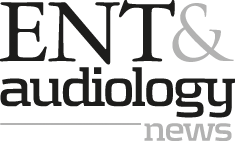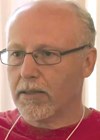Audiology features
A tribute to Mead C Killion, PhD 1939-2025
The renowned audiologist and inventor Mead Killion passed away comfortably on 3 November 2025 in Elkhorn, Wisconsin, US. Mead was known for inventing products that left us scratching our heads, trying to figure out why we hadn’t thought of them...
The Apple effect: could Apple’s involvement redefine the future of hearing aid technology?
As Apple enters hearing health, this article explores how its tech may reduce stigma and reshape hearing care, without replacing clinical expertise. As hearing health professionals, we are all acutely aware of the gap between prevalence of hearing loss and...
Celebrating 25 years of the UST Audiology Program: a landmark audiology school in the Philippines
From pioneering roots to global recognition, UST’s Audiology Program has shaped hearing healthcare in the Philippines for 25 years – and is still evolving. A quarter century of excellence in audiology education Marking its silver anniversary in 2024, the University...
Pioneering standards of aural care in the UK: vision and initiatives of the NACSG
Ear wax removal remains a controversial subject in the UK. How will a strategy group support reform in the sector? Background: elevating standards in aural care The National Aural Care Strategy Group (NACSG) was established to address the multifaceted challenges...
Where Art meets Science (and earplugs): a tale of acoustics, aesthetics and audiology
For the fifth cover in the Art meets Science series, we celebrate not only the fusion of audiology and art, but also friendship, nature and the kind of collaboration that reaches far beyond the clinic walls. My colleague and dear...
Enhancing care for adults with auditory neuropathy spectrum disorder
It’s time to improve and personalise care for adults with ANSD. Knowing the lesion site could open up treatment opportunities like cochlear implants or new cell therapies. Auditory neuropathy spectrum disorder (ANSD) comprises a group of hearing disorders characterised by...
A return to digital delay and lip reading
Hearing aid + accessory + smartphone app = a ‘synching’ feeling? Marshall Chasin explains why patients might be losing the rhythm. The historical literature (at least going back to some of the classic texts in the 1960s) is full of...
The art of hearing: a conversation between silence and colour
The image on the ENT & Audiology News September/October 2025 cover is not merely an artwork – it is a conversation. A conversation in colour. A dialogue between silence and sound, between science and emotion. It is part of a...
Understanding the NAL-NL3 Prescription System: a new era of personalised hearing aid fitting
The NAL-NL3 system marks a transformative step in hearing aid fitting, shifting from a one-size-fits-most prescription to a modular, patient-centred approach. Developed by the National Acoustic Laboratories, this new system integrates a core audiogram-based prescription with targeted modules to address...
Vulnerability in audiological care: insights from Brené Brown and Kristin Neff
Embracing emotional openness and self-compassion can improve outcomes and relationships in the often-overlooked emotional landscape of audiological care. Audiological care is a deeply personal and often emotional journey for individuals experiencing hearing loss or other auditory challenges. Beyond the clinical...
Dementia assessments for people with deafness, deafblindness or visual impairment in Scotland
How is the medical community doing with assessing cognitive decline in those with a sensory impairment? The ALLIANCE Scottish Sensory Hub was tasked with finding out. Background There is growing evidence of a connection between dementia and sensory loss. However,...
Sound advice for staying healthy: promoting holistic health in adults with hearing loss
Hearing loss is linked to chronic conditions like dementia and heart disease. Dr Maidment explores how integrated healthcare can improve outcomes, highlighting the need for a multidisciplinary approach. Emerging evidence suggests that hearing loss is associated with an increased risk...

















